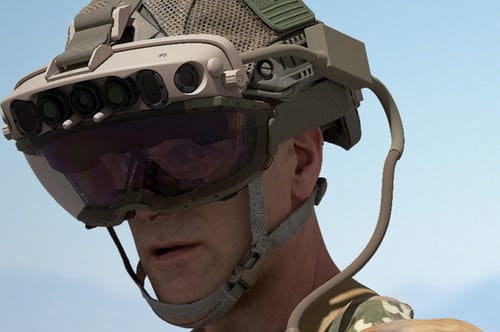 |
| Microsoft provides augmented reality technology for the US Army |
Microsoft has been working with the US Army since 2018, and Microsoft received an order to supply HoloLens headphones to the US military.
The contract is valued at $ 21.88 billion over 10 years, including the supply of 120,000 pairs of glasses to Microsoft.
Prior to the announcement, Microsoft and the US Department of Defense signed a $ 480 million contract in 2018 to develop an Integrated Advanced Vision System (IVAS) based on a $ 3,500 standard using HoloLens optimized for Azure Cloud Services.
The program improves awareness of conditions, enables information exchange and decision-making in various situations, enables commanders to effectively share data and tactical goals with soldiers on the ground, and provides night vision capabilities.
This decision was flatly rejected by some of the company’s employees, forcing the CEO (Satya Nadella) to respond.
However, the boycott did not prevent the US Department of Defense and Microsoft from working together on developing these new headphones.
For the past two years, Microsoft has worked closely with the US military, said Alex Kipman, inventor of HoloLens. Together, we created soldier-focused design to enable rapid product prototyping that provides soldiers with tools and tools. The ability required to complete the task.
The US Army statement says: The system uses augmented reality and machine learning to create a mixed realistic training environment in which hand combat skills can be trained.
In February, the US Army unveiled a new, stiffer version of the head-up display that allows armored drivers to see the walls of the Bradley Combat Vehicle.
The previous version was criticized for poor sensor and GPS performance, but the current design has changed little.
Since the introduction of Microsoft's second release mixed reality glasses in 2019, HoloLens hasn't noticed any significant hardware changes.
Microsoft is gradually improving the HoloLens aspect, improving gestures.
Early business models for augmented reality glasses such as HoloLens, Google Glass, and Spectacles are transforming from end users to commercial, industrial and military applications.
Nearly a fifth of Facebook's workforce is said to be involved in VR and AR development, Apple has hired former device managers to oversee AR and VR, and Samsung, Qualcomm and Snap have recently introduced more prototypes.
